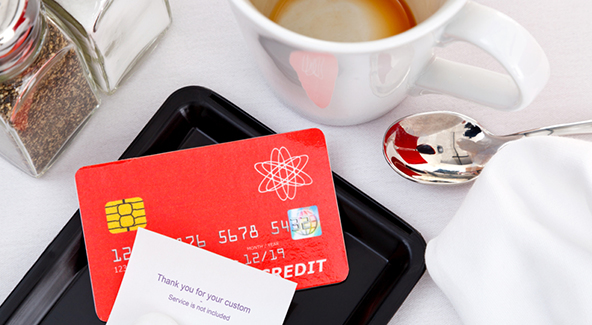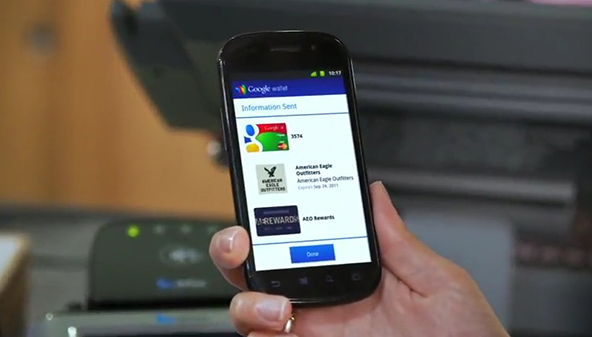All Blame Credit Card Interchange Fees

Today’s attack on the fiendish conspiracy, otherwise known as interchange fees, to milk merchants of all of their profits comes to us courtesy of Bill Leichsenring — a restaurateur writing for the Des Moines Register. In his piece, Leichsenring largely sticks to a familiar script: a heroic entrepreneur builds a successful business from scratch and against all the odds, only to see all of his profits eaten up by an insidious and omnipotent service provider with whom one cannot negotiate and from whom no quarter can be expected. Of course, the plot is not exactly watertight, but since when did fiction writers become willing to let the facts get in the way of a good story?
I’ve always been skeptical about the level of consumer interest in the interchange issue. The reality is that most Americans don’t know what these fees are and the rest either don’t understand or don’t care all that much about them. Now, that is not to say that consumers have no horse in this race. On the contrary, the Durbin Amendment, which prompted the Federal Reserve’s decision to cut the debit card interchange fees last year, caused an overall increase of the cost of banking services, as card issuers were desperately trying to make up for the huge shortfall in their revenue streams. Yet, it is difficult for the retailers to rally consumers around a cause to which they are largely indifferent, which is why exercises such as Leichsenring’s are intended mostly to keep the merchants and their lobbyists up in arms, as well as to keep the pressure on the legislators and judiciary, which are now grappling with the credit card interchange issue. And that is why such writings should be addressed.
Interchange Fees Are Bad, Heroic Restaurateur Edition
In making his case against the evil interchange coalition, Leichsenring recruits the help of his father who “founded our original restaurant in 1940” and “faced many challenges”, but crucially, “credit card swipe fees was not one of them”. So we seem to be meant to believe that, had the author’s father been accepting credit cards when he first opened up his restaurant, things may well have turned out much less successfully. Never mind all the evidence that consumers actually enjoy the convenience of using credit cards and spend more when they do so.
Here is the core of Leichsenring’s argument, which should by now be quite familiar to those of you who follow the discussion:
We talk about a free market and the ability to compete, but there’s no ability to genuinely understand the swipe fee system and certainly no ability to negotiate its terms.
In my opinion it’s set up that way on purpose by the credit card companies and the big banks. They created a system that benefits their bottom lines at the expense of small businesses and our customers.
First of all, I would argue that there certainly is the ability to understand the interchange fee system; all you have to do is some reading. More importantly, there is a reason why credit card acceptance is not free, which is what the retailers really want: there are costs involved in the maintaining of programs for issuing bank cards and servicing cardholders, as well as for the actual processing of card payments in a timely and secure manner. And yes, the card issuers, payment processors and card networks do need to make a reasonable profit — much as Senator Durbin might dispute that need — to make the whole project worth their while.
How Big of an Issue Is That, Really?
But I think that the most important aspect of the interchange issue is not truly appreciated by those few consumers who are following the debate. In fact, I don’t think that many of the retailers themselves fully realize just how insignificant of an issue this really is. Actually, Leichsenring himself unwittingly gives us an indication of that insignificance, even as he does his best to convince us otherwise:
I doubt our customers have much of a sense of how expensive it is for businesses to accept credit cards, understandably so. But swipe fees cost our restaurants more than $60,000 a year, exceeded only by the costs for labor, product and utilities.
Firstly, you need to understand that the $60,000 figure is the sum of the payment processor’s charges and the interchange fees, which are collected solely by the card issuers. And don’t let that number startle you — this is the total annual charge for the author’s two restaurants, one of which has a 600-person capacity and the other one — the newer location — is presumably not much smaller and quite probably larger. So we are talking about a fairly large operation. More importantly, Leichsenring himself puts things in perspective by telling us that his payment processing costs are a smaller expense item not only than the costs of labor and product, but also the utilities. And here is a question for you: when was the last time you heard restaurateurs complain about the cost of electricity? After all, it is obviously high enough to provoke their displeasure, it is non-negotiable and it is set by corporations whose monopolistic status puts the reviled credit card companies to shame. I don’t get it. But then, no one said this should make any sense.
The Takeaway
The point is that the interchange issue is, well, a non-issue. In a previous post I offered some basic calculations to show you just how much a retailer could save by accepting a rewards card — another favorite target for the interchange bashers — at the rate of a regular one:
The vast majority of this merchant’s Visa credit card transactions would be processed at one of these two interchange rates: the one for rewards cards — 1.65% + $0.10 — and the one for non-rewards cards — 1.51% + $0.10. As you see, the difference between these two rates is a grand total of 14 basis points! To put it another way, if in our example the merchant’s average ticket amount is $75 — and it may well be lower than that — the difference between a rewards and a non-rewards card would be 10.5 cents! That is what the huge problem is about.
Moreover, even if we reduced the rewards interchange rate by a whole percentage point — which might be what is currently under discussion — the merchant in our example would save a grand total of 75 cents. But there is something to be said about these rewards cards that somehow has been left out of the discussion. Many big restaurant chains — not to mention all of the big-box retailers — actually have their own rewards and / or prepaid card programs — of course managed by a card issuer — that they actively promote. Now, I ask you, if payment cards were such a huge issue, why would retailers go out of their way to make you use them?
Image credit: Lovelandpolitics.com.



Question: During the swipe fee debates, the proponents stated the swipe fees generated over a $1 billion per month for the banks. But, didn’t mention that retail and food sales were over $400 billion per month. Seems like a important point is being missed, while over a $1 billiion per month seems huge and has an emotional appeal, but wouldn’t over $400 billion have a similar visceral impact?
Can a reasonable and defensible calculation be made of what $60,000, again a big number for most folks, in swipe fees represents in the gross revenue the business generated from the fees? How big is $60,000 compared to the restaurant’s total gross?
The underlying issue is that this represents another charge to the consumer who, one way or another, is ultimately going to be covering the cost. And it is down to yet another opaque bank fee, of which there are far too many.